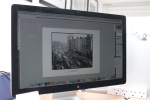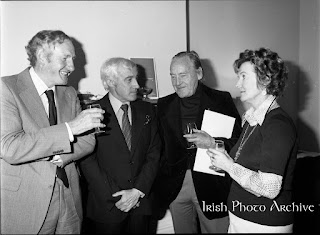On the morning of the first day of August in 1975, Ireland
woke up to the shocking news of the paramilitary murder of three members of the
Miami Showband. This very popular band, often dubbed ‘The Irish Beatles’, had
been ambushed by the Ulster Volunteer Force (UVF) at a fake roadblock on their
way back from a gig in Banbridge, County Down, where the shootings occurred.
Two members of the band survived.
The Miami Showband played the same type of music as all the
other showbands of the era: covers of chart music, with some Irish ballads and
traditional songs mixed in. They did not sing political songs, or make any
comment on the Troubles or Northern Ireland politics.
The Miami Showband was where Dickie Rock first rose to fame,
and they had seven No.1’s in the Irish charts in the 1960s and ‘70s and were
the first Irish artist to go straight to No.1 spot for their single, ‘Every
Step of the Way’. They also represented Ireland in the Eurovision in 1966 and
appeared on British TV.
The line up of the band changed several times before 1975,
with the biggest upheaval in 1972 when Dickie Rock went solo. On the night what
became known as ‘the Miami Showband Massacre’, the line-up was Des Lee
(saxophonist), Brian McCoy (trumpeter), Tony Geraghty (guitarist), Fran O'Toole
(lead singer), Steven Travers (bassist) and Ray Millar (drummer – who survived
the attack when he drove back to Dublin by himself).
The armed forces in Northern Ireland regularly set up
roadblocks at that time, so it was not an unusual event to encounter one. When
the band pulled up in their van, they were politely asked to leave the vehicle
as it was being checked. The men at the checkpoint, all dressed in British Army
uniforms, talked to the musicians about the gig they’d had that night while the
van was being ‘checked’.
However, under the pretense of the security check, two of
the UVF men were installing a bomb in the back of the van. It was set with a
timer, but detonated as they left the van, killing them both instantly. All the
members of the Miami Showband were knocked into the field or ditch beside the
road with the force of the blast. The remaining gunmen panicked after the
blast, and started firing at the band to eliminate all witnesses to the event.
Brian McCoy died almost instantly in the first volley of
shots, with Fran O’Toole and Tony Geraghty shot down as they tried to run away.
Des Lee had been knocked into the ditch by the door of the van, which also
helped conceal him from the gunmen. Steven Travers had been hit by a bullet,
but survived by playing dead.
It is believed that the bomb was intended to detonate within
the Republic, and that the musicians could then be accused of transporting arms
for republican paramilitaries. All the attack did was increase tensions across
Ireland in an already volatile time, and make other showbands reluctant to
travel to Northern Ireland. It brought the careers of some much loved musicians
to a brutal end, and added to the toll of innocent people caught in the middle
of the Troubles.
















